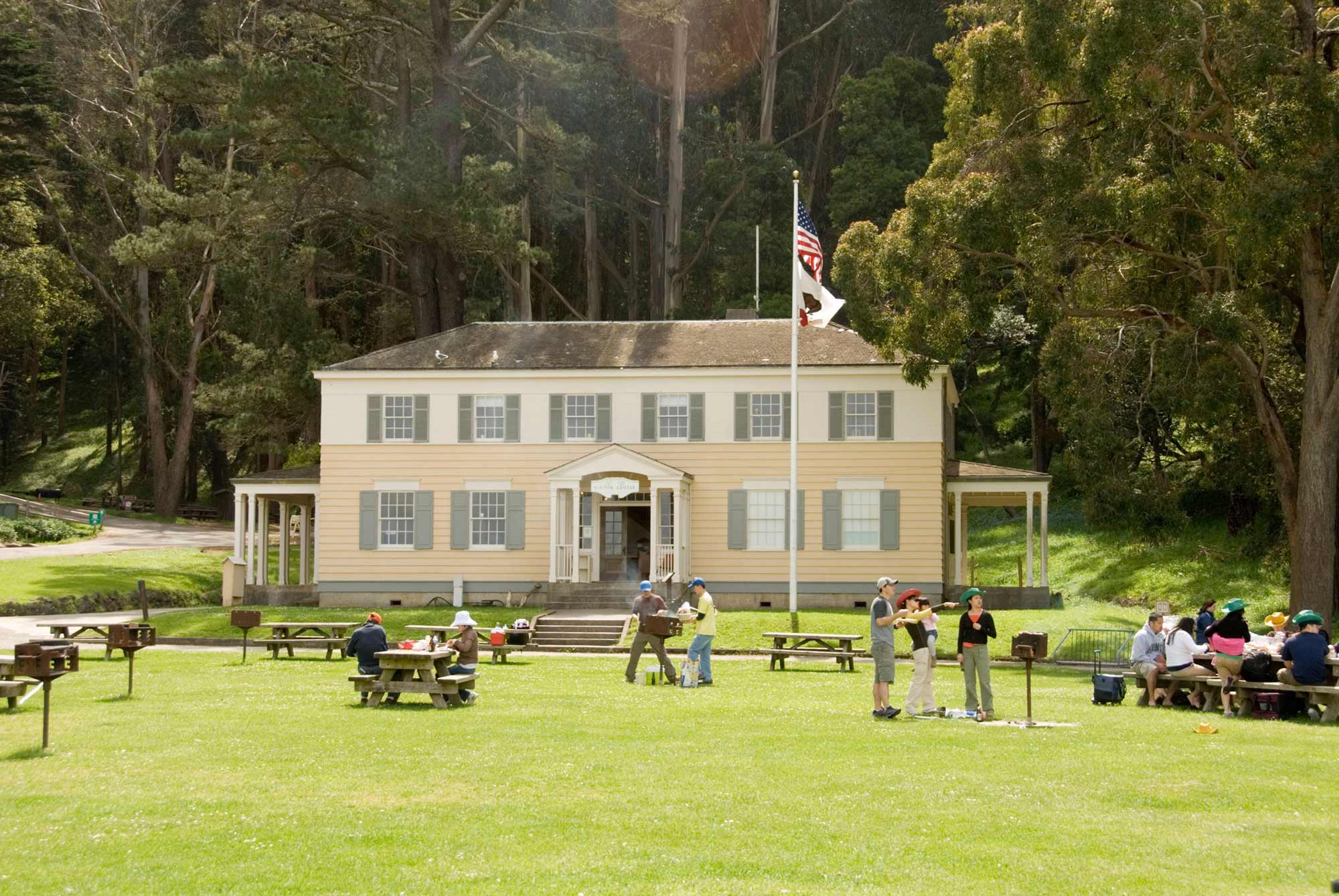Featured in this post
Angel Island is your best bet if you’re looking for an island escape in the Bay Area. This little-known gem is located in San Francisco Bay, just a short distance from Alcatraz. While most people know about Alcatraz, Angel Island is often overlooked. This island offers stunning views of the Golden Gate Bridge and the Bay Area skyline and plenty of outdoor activities to keep you busy. If you’re looking for a unique island getaway, be sure to check out Angel Island!
What is Angel Island?
Angel Island is the second largest Island in San Francisco Bay Area with Alameda being the largest. Angel Island is so large that on a clear day, Sonoma and Napa can be seen from the northern side of the Island, and San Jose can be seen from the south side. The highest point on the Island, almost exactly at its center, is Mount Caroline Livermore, which is 788 feet high. Angel Island’s long history dates back to the Native Americans who once lived there. It was also a major outpost for the Spanish during their colonization of California. In more recent times, Angel Island has been used as a military base, an immigrant detention center, and a state park. Today, visitors can enjoy hiking, biking, and picnicking on the island, as well as taking in stunning views of the Bay Area. Angel Island is truly a unique place with a rich history and beautiful scenery.

The History of Angel Island
Until about ten thousand years ago, Angel Island was connected to the mainland, but it was cut off by the rise in sea levels due to the end of the last ice age. From about two thousand years ago, the Island was a fishing and hunting site for the Coast Miwok Native Americans. Similar evidence of Native American settlement is found on the nearby mainland of the Tiburon Peninsula upon Ring Mountain.
In 1775, the Spanish naval vessel San Carlos made the first European entry into San Francisco Bay under the command of Juan de Ayala. Ayala anchored off Angel Island and assigned its modern name Isla de los Ángeles. The bay where he anchored his ship is now known as Ayala Cove.
Like much of the California coast, Angel Island was subsequently used for cattle ranching. In 1863, during the American Civil War, the United States Army was concerned about Confederate naval raiders attacking San Francisco, so it decided to construct artillery batteries on Angel Island, first at Stuart (or Stewart) Point and then Point Knox. Colonel Rene Edward de Russy was the Chief Engineer and James Terry Gardiner was the engineer tasked with designing and supervising the work. The Army established a camp on the Island (now known as Camp Reynolds or the West Garrison) and it subsequently became an infantry garrison during the US campaigns against Native American peoples in the West.
Fort McDowell
In the late 19th century, the army designated the entire Island as “Fort McDowell” and developed further facilities there, including what is now called the East Garrison or Fort McDowell. In 1891, a quarantine station was opened in Ayala Cove (which at the time was known as Hospital Cove). During the Spanish American War, the Island served as a discharge depot for returning troops. It continued to serve as a transit station throughout the first half of the 20th century, with World War I troops embarking and returning there. At the end of the war, the disembarkation center was commanded by William P. Burnham who had commanded the 82nd Division in France.
During World War II, the need for troops in the Pacific far exceeded prior needs. The facilities on Angel Island were expanded and further processing was done at Fort Mason in San Francisco. Prior to the war, the infrastructure had been expanded, including the construction of the Army ferry USAT General Frank M. Coxe used transport troops to and from Angel Island. Fort McDowell was also used as a detention station for Japanese, German and Italian immigrant residents of Hawaii arrested as potential fifth columnists. These internees were later transferred to inland Department of Justice and Army camps. Japanese and German prisoners of war were also held on the Island, supplanting immigration needs, which were curtailed during the war years.
The army decommissioned the military post in 1947. In 1954 a Nike missile station was installed on the Island. The missile magazines were constructed above Point Blunt on the Island’s southeast corner and the top of Mount Ida (now Mount Caroline Livermore) was flattened to make way for a helipad as well as the associated radar and tracking station. The missiles were removed in 1962 when the military left the Island. The missile launch pad still exists, but the station atop Mount Caroline Livermore was reverted to its original contours in 2006.
Quarantine Station
The Bubonic Plague posed such a threat to the United States that Angel Island opened as a quarantine station in 1891 to screen Asian passengers and their baggage prior to landing on American soil. The construction of this federally funded quarantine station was completed in 1890 and the compound contained many separate buildings, including detention barracks, disinfection facilities, convalescence quarters and an isolation hospital that was known as the “leper’s house.”
In response to the death of Wong Chut King, a Chinese immigrant who worked in a rat-infested lumberyard in Chinatown, the San Francisco Health Board quickly quarantined the local area to neutralize possible disease-causing agents. People suspected of having any contact with the disease were sent to isolation facilities. The Chinese were confused by the idea of separating the entire region to control the spread of the disease because they believed it emerged from toxic vapors created in the dirt via season changes.
In response to more deaths, tissue samples were sent to Angel Island for testing to determine if they harbored Yersinia Pestis, the bacteria responsible for spreading the bubonic plague. At this time, the plague was difficult to diagnose due to other diseases, which could mask the presence of plague. Bacteriologist Joseph Kinyoun, who was stationed at Angel Island in 1899, believed that the plague would spread throughout San Francisco’s Chinatown after Yersinia Pestis was confirmed from one of the deaths. Even with a vaccine to inoculate and protect the residents of Chinatown, the Chinese believed that the vaccine was experimental and didn’t want it administered.
Immigration Station
The construction of the Angel Island immigration station began in 1905 but was not used until 1910. This zone was known as China Cove. It was built for controlling Chinese entry into the United States. From 1910 to 1940, Angel Island served as an immigration station that processed immigrants from 84 different countries, approximately one million being Chinese. The purpose of the immigration station was to investigate Chinese who had been denied entry from the Chinese Exclusion Act of 1882. Immigrants had to prove that they had husbands or fathers who were United States citizens in order to avoid deportation.
The immigration station at Angel Island was predominantly used to inspect, disinfect and detain Chinese, Japanese and other Asian immigrants who sailed across the Pacific Ocean. In addition to standard medical examinations, Chinese immigrants were inspected for parasitic diseases and the tests for intestinal parasites required a stool specimen. Immigrants described the examination and disinfection process as brutal, humiliating and indecent. Sick passengers were sent to the hospital on the Island until they could pass a medical examination and an immigration hearing. Investigation processes determined the length of time an immigrant would stay at the station and Chinese immigrants could be detained for a period as short as two weeks to as long as two years.
A person’s racial identity and social class determined the intensity of the examination imposed, resulting in fewer white Europeans and American citizens being subjected to the inspections. When they were subjected to inspections, doctors were more diligent about adhering to sanitation practices.
A fire destroyed the administration building in 1940 and subsequent immigration processing took place in San Francisco. On November 5, 1940, the last gathering of around 200 immigrants, including around 150 Chinese, were exchanged from Angel Island to brief quarters in San Francisco. The “Chinese Exclusion Act,” initially proposed to keep going for 10 years, was broadened and extended and not canceled until the point 1943 when China became our partner in World War II.
In 1964, the Chinese American community successfully lobbied the State of California to designate the immigration station as a State Landmark. Today, the Angel Island Immigration Station is a federally designated National Historic Landmark. It was then renovated by the California State Parks, and re-opened February 16, 2009.
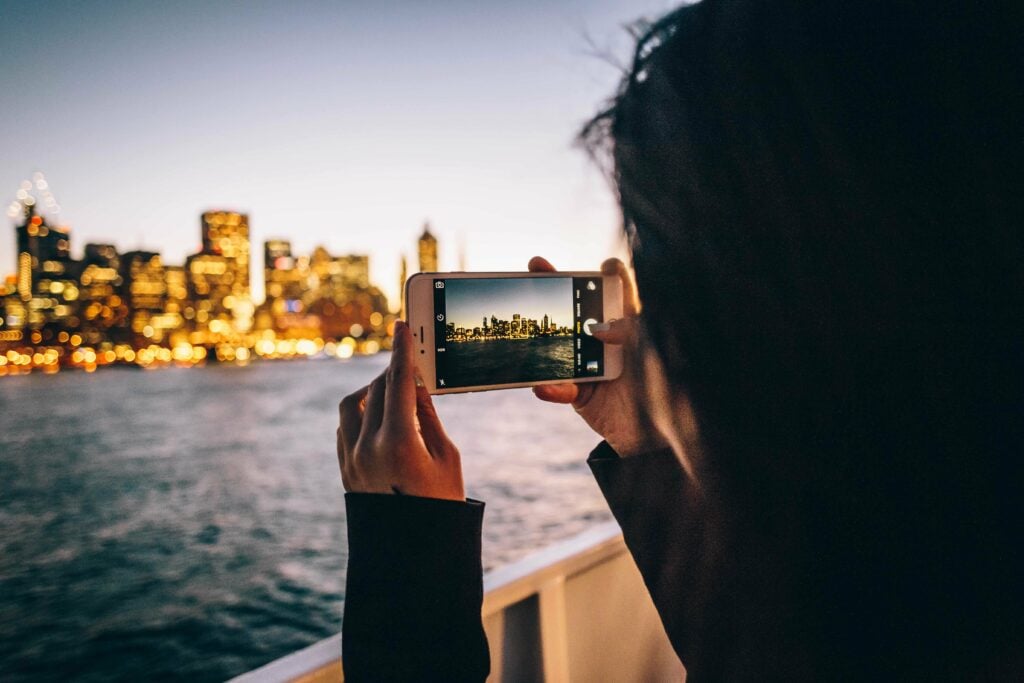
Angel Island’s Location
Angel Island is located in the San Francisco Bay, just off the coast of California. The majority of the Island is part of the city of Tiburon in Marin County while a small sliver at the east end extends in the City and County of San Francisco. The Island is separated from the mainland of Marin County by Raccoon Strait, which is about 90 feet deep.
What Angel Island Offers | Visit Historical Sites On Angel Island
If you’re looking for breathtaking views, Angel Island is the place for you. Here are some of the best things to see on the island:
The View from Mount Livermore:
Mount Livermore is the highest point on Angel Island and offers stunning 360-degree views of the Bay Area. On a clear day, you can see all the way to San Francisco and Oakland. The Golden Gate Bridge and Alcatraz are also visible from Mount Livermore.
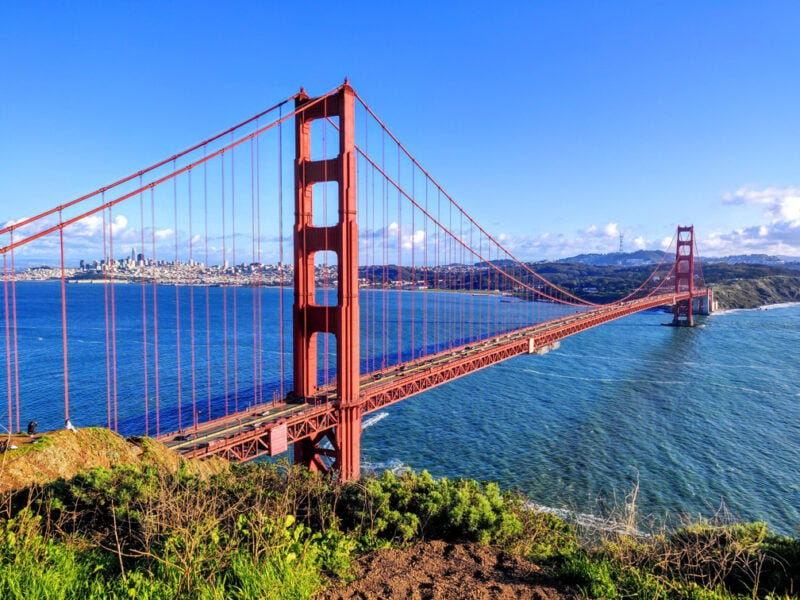
The Golden Gate Bridge:
One of the most iconic landmarks in San Francisco is the Golden Gate Bridge. This suspension bridge spans the Golden Gate Strait, connecting San Francisco to Marin County. The bridge is one of the most photographed landmarks in the world, and it’s definitely worth checking out the view when you’re on Angel Island.
Alcatraz:
Alcatraz is a small island located in San Francisco Bay. It’s best known for its former prison, which housed some of America’s most notorious criminals. Alcatraz is now a popular tourist destination, and you have a great view of Angel Island. You can book a day tour with Alcatraz City Cruises for a chance to explore one of the most notorious prisons in the history of the United States.

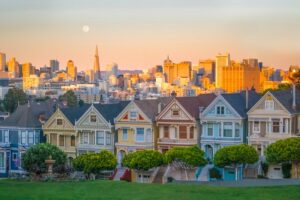
San Francisco Skyline:
The San Francisco skyline is one of the most recognizable in the world. From Angel Island, you can get a great view of the city’s skyscrapers, including the Transamerica Pyramid and the Salesforce Tower.

San Francisco Bay:
The Bay Area is home to some of the most beautiful scenery in California. You can get a great view of San Francisco Bay and its surrounding islands from Angel Island.
Outdoor Activities on Angel Island
There are plenty of outdoor activities to enjoy on Angel Island. Whether you want to go for a hike, a swim, or just take in the stunning views, there is something for everyone.
1. Trails
For those who love to hike, several trails of varying difficulty levels are available to explore. The moderate trails offer beautiful views of the island and the surrounding bay area, while the more challenging trails will take you to some of the island’s highest points. And if you’re feeling adventurous, you can even hike to the top of Mt. Caroline Livermore for an unforgettable view.
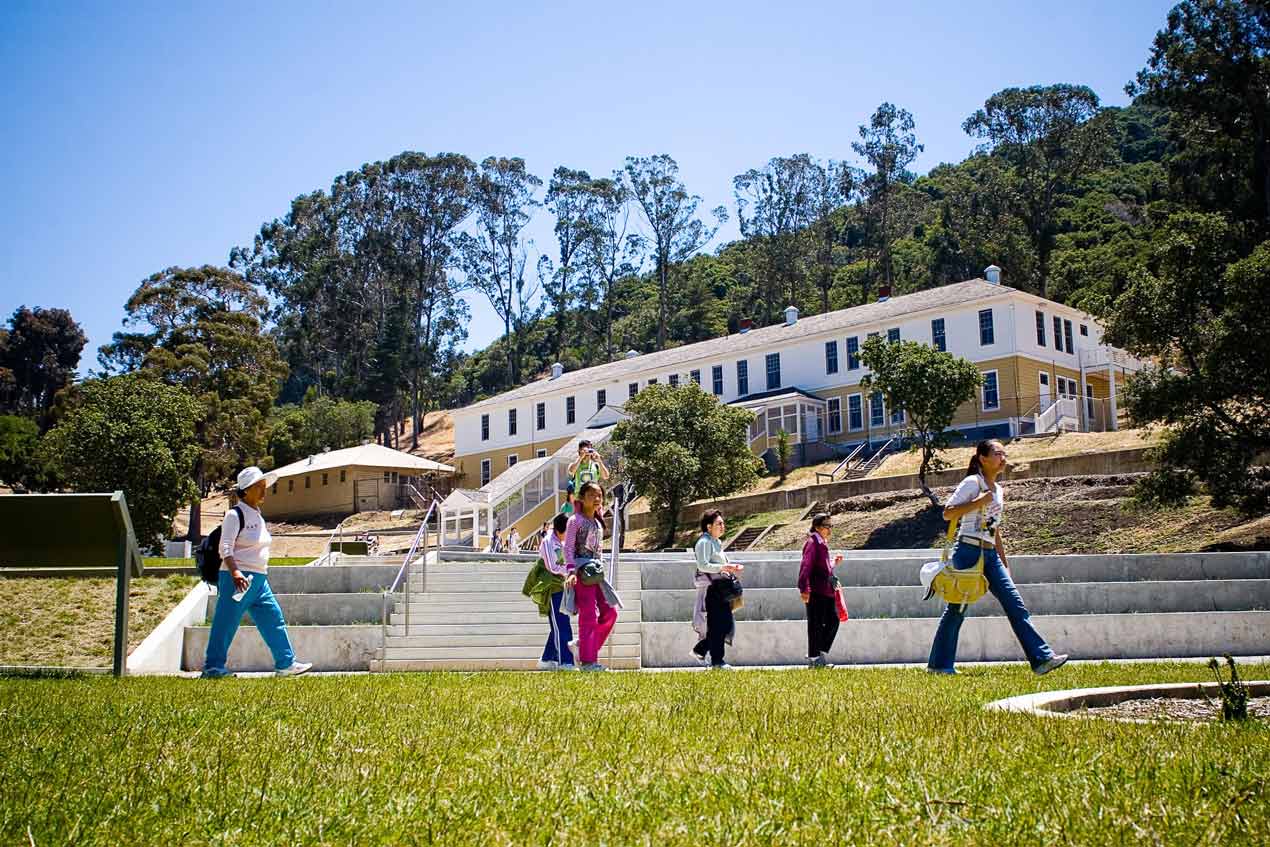
2. Coves
Swimmers will enjoy the crystal-clear waters around Angel Island. There are several sheltered coves where you can take a dip or brave the open waters for a more strenuous swim. Whichever you choose, you’re sure to have an enjoyable time.
3. Picnicking
Angel Island is the perfect place to enjoy a picnic lunch. There are numerous scenic spots where you can relax and take in the beautiful views. So, be sure to pack a picnic basket before heading to the island.
4. Bird Watching:
Angel Island is the place for you if you’re a bird lover. Over 60 species of birds call the island home, and you’re sure to see some interesting feathered friends during your visit.
5. Fishing
Anglers will enjoy the many fishing spots on Angel Island. Whether you’re casting a line from the shore or going out on a boat, you’re sure to have a successful day of fishing.

What To Pack For Your Trip to Angel Island
When packing for your trip to Angel Island, be sure to bring plenty of sunscreen and water. Hiking shoes are also a good idea, as there are many trails to explore on the island. And if you’re planning on swimming, be sure to pack a bathing suit and towel. Here are some other items to consider packing for your trip:
- Snacks
- Hat or sunglasses
- Insect repellent
- Binoculars (if you’re planning on bird watching)
- Fishing rod (if you’re planning on fishing)
- Picnic blanket or mat (if you’re planning on having a picnic)
Be sure to check the weather forecast before packing for your trip, as the island can be quite windy. And if you’re visiting during the summer, be aware that fog is common in the morning and evening hours. With these packing tips in mind, you’re sure to have a great time on Angel Island.
How To Get To Angel Island? (Transportation Tips)
There are several ways to get to Angel Island. The most popular method is by ferry, which departs from San Francisco, Tiburon, and Vallejo. If you’re coming from San Francisco, the ferry ride takes about 30 minutes. And if you’re coming from Tiburon or Vallejo, the ferry ride takes about 45 minutes. Once you’re on the island, there are plenty of things to do and see. So, be sure to plan accordingly and give yourself enough time to explore what Angel Island offers.
How Far Is Angel Island From Alcatraz?
Angel Island is located in San Francisco Bay, just a short distance from Alcatraz Island. The two islands are about one mile apart and can be seen from each other on a clear day. Angel Island is the largest island in the bay and is a California State Park. It is home to hiking trails, beaches, and bird-watching areas. On the other hand, Alcatraz is best known for its former federal prison that housed some of America’s most notorious criminals. Today, it is a popular tourist attraction where visitors can take tours of the prison grounds and learn about its history. Though both islands are worth visiting, they offer different experiences. So, be sure to plan accordingly and allow enough time to explore both islands. Also be sure to find more things to do around the San Francisco area!
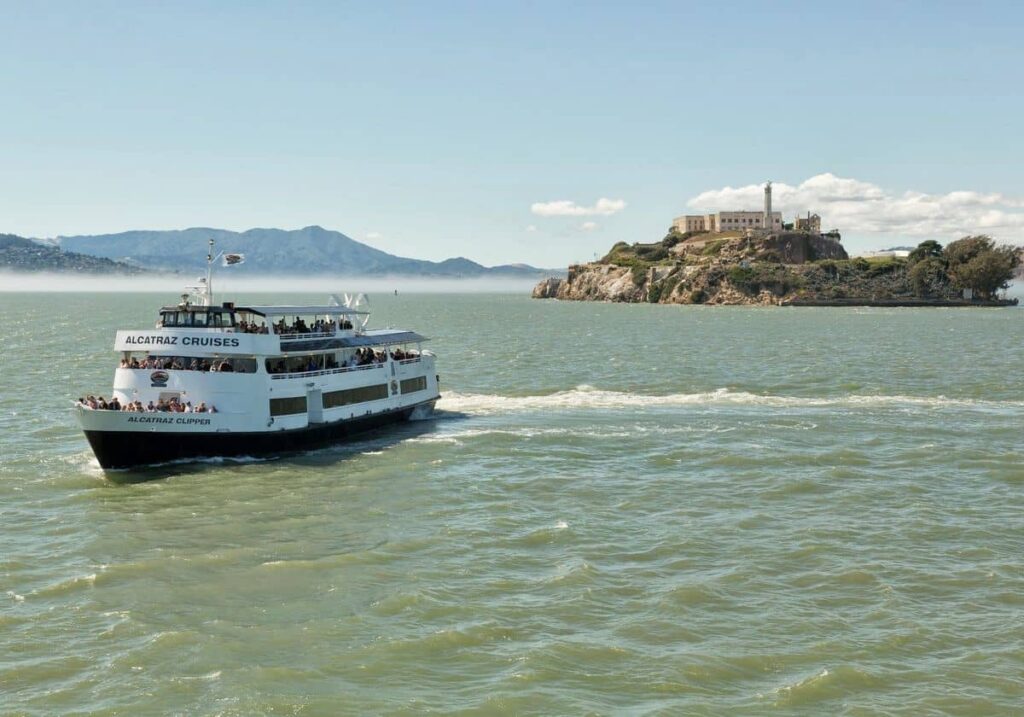
FAQs – Angel Island Things to Do in 2024
What is Angel Island and where is it located?
Angel Island is a large island in San Francisco Bay, known for its rich history and scenic views.
What historical significance does Angel Island hold?
The island has a diverse history, including use as a military base, immigration station, and now a state park.
What activities can visitors enjoy on Angel Island in 2024?
Hiking, biking, picnicking, and exploring historical sites are popular activities on the island.
Can visitors see the Golden Gate Bridge from Angel Island?
Yes, Angel Island offers stunning views of the Golden Gate Bridge and the San Francisco skyline.
What are the transportation options to Angel Island?
Ferries from San Francisco, Tiburon, and Vallejo provide access to the island.
Are guided tours available on Angel Island?
Yes, there are guided tours that provide insights into the island’s rich history and natural beauty.
Is Angel Island suitable for family outings?
Absolutely, the island’s outdoor activities and historical sites are great for family visits.
What should visitors bring when exploring Angel Island?
It’s advisable to bring water, sunscreen, hiking shoes, and a camera to capture the scenic views.
Are there any dining options on Angel Island?
There are limited dining facilities, so visitors often bring picnics to enjoy during their visit.
Can Angel Island be visited year-round?
Yes, Angel Island is accessible year-round, weather permitting.
Is there a specific time of year that’s best to visit Angel Island?
The best time to visit Angel Island is during the spring and fall months when the weather is more temperate, and the crowds are smaller compared to the summer months. However, the island offers unique charms in every season.
Are there any accommodations on Angel Island for overnight stays?
While there are no hotels on Angel Island, camping is available in designated areas with a reservation. It offers a unique way to experience the island’s natural beauty overnight.
What wildlife can be spotted on Angel Island?
Visitors can see a variety of wildlife, including deer, raccoons, and numerous bird species. The island’s diverse habitats support rich biodiversity.
Are there any beaches on Angel Island?
Yes, Angel Island has several small beaches that are great for picnicking, relaxing, and enjoying the views of the San Francisco Bay. Some beaches also serve as launch points for kayaks and stand-up paddleboards.
Can I rent bicycles on Angel Island, or do I need to bring my own?
Bicycles can be rented on the island. This is a popular way to explore the island’s various trails and enjoy the scenic views at your own pace.
What are the most notable historical sites to visit on Angel Island?
Key historical sites include the Immigration Station, which offers a glimpse into the experiences of immigrants who came through Angel Island, and the military installations that reflect the island’s strategic importance in national defense.
Is fishing allowed on Angel Island?
Fishing is allowed on Angel Island with appropriate California fishing licenses. The waters around the island are known for their diversity of marine life, making it a popular spot for fishing enthusiasts.
How can visitors contribute to the preservation of Angel Island?
Visitors are encouraged to follow the “Leave No Trace” principles by packing out all trash, staying on designated trails to protect wildlife habitats, and respecting the historical and natural resources of the island.
Are there any annual events or festivals on Angel Island that visitors should be aware of?
Yes, Angel Island hosts several annual events, including cultural festivals and athletic competitions, which provide unique opportunities to experience the island’s community spirit and natural beauty.
Original Post Date: July 8, 2021


